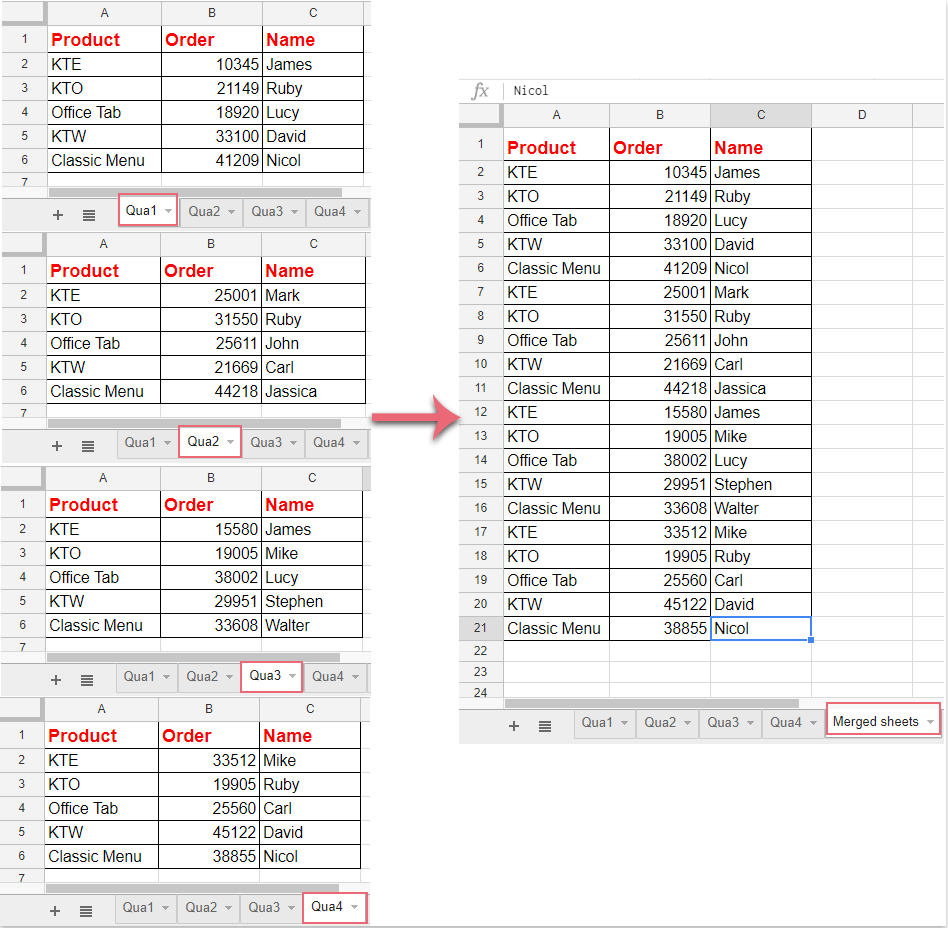Combine Excel Sheets in R: Easy Methods Explained

If you've ever found yourself working with multiple Excel spreadsheets and needing to combine their data, you're not alone. Whether you're compiling sales figures, aggregating survey data, or just trying to get a holistic view of your information, merging Excel sheets is a common task in data management. This comprehensive guide will walk you through several methods to combine Excel sheets in R, ensuring that your data integration process is seamless and efficient.
Why Use R for Combining Excel Sheets?

R is renowned for its data manipulation capabilities. With packages like readxl for reading Excel files, and dplyr for data transformation, R provides a robust environment for combining datasets. Here’s why R might be the best choice for this task:
- Automation: Scripts can be written to automate the process, reducing manual errors and saving time.
- Flexibility: R allows for complex data transformations and cleaning before and after combining sheets.
- Scalability: Handles both small and large datasets efficiently.

Method 1: Using the readxl Package

The readxl package is a popular choice for dealing with Excel files. Here’s how you can use it to combine sheets:
library(readxl) library(dplyr)data <- list() for (sheet in excel_sheets(“your_file.xlsx”)) { data[[sheet]] <- read_excel(“your_file.xlsx”, sheet = sheet) }
combined_data <- do.call(“rbind”, lapply(data, as.data.frame))
Steps to Follow:

- Install the readxl and dplyr packages if not already installed.
- Read each sheet into a list using a for-loop.
- Bind all data frames into one using
do.callandrbind.
💡 Note: Ensure column names across all sheets match for a smooth binding process.
Method 2: Batch Processing with Base R

If your files are in separate Excel documents, or you prefer a base R solution, you can still efficiently combine them:
files <- dir(“data_folder”, pattern = “^\.xlsx$”, full.names = TRUE)
read_and_bind <- function(file) { sheets <- excel_sheets(file) data_list <- lapply(sheets, function(sheet) read_excel(file, sheet = sheet)) do.call(“rbind”, data_list) }
all_data <- lapply(files, read_and_bind) combined_data <- do.call(“rbind”, all_data)
Steps to Follow:

- Define a path to your Excel files.
- Create a function to read and combine sheets from each file.
- Use
lapplyto apply this function to all files and then bind the result.
Method 3: Using dplyr for Cleaner Code

dplyr can be combined with purrr for a more concise approach:
library(readxl) library(dplyr) library(purrr)files <- dir(“data_folder”, pattern = “^\.xlsx$”, full.names = TRUE)
all_data <- files %>% map_dfr(read_excel, .id = “source”)
all_datasource <- basename(all_datasource)
Choosing the Right Method

Here’s a quick comparison to help you decide which method suits your needs:
| Method | Complexity | Best For |
|---|---|---|
| readxl | Simple | Combining sheets within one file |
| Base R | Moderate | Batch processing of multiple files |
| dplyr with purrr | Advanced | Concise code for combining and cleaning data |

💡 Note: Consider the structure of your data and how you want to manage file paths when choosing a method.
To conclude, R offers multiple paths to effectively combine Excel sheets, each with its benefits depending on your data structure and analytical needs. Whether you’re aiming for simplicity or control over the data combination process, R’s ecosystem provides the tools you need to streamline your data management tasks.
Now, you’re equipped with the knowledge to merge your Excel data in R with confidence, allowing for deeper data analysis and a more integrated view of your information.
Can I combine sheets with different column names?

+
Yes, but you’ll need to align column names before combining. Use dplyr’s rename function or similar methods to ensure consistency across datasets.
What if my Excel files have different formats?

+
You might need to preprocess files to standardize formats before combining. R can help with scripts that clean and format data, making it compatible for merging.
How can I automate this process regularly?

+
Automating in R can be done by writing scripts that run as scheduled tasks or using tools like RStudio’s Job system for automated execution.